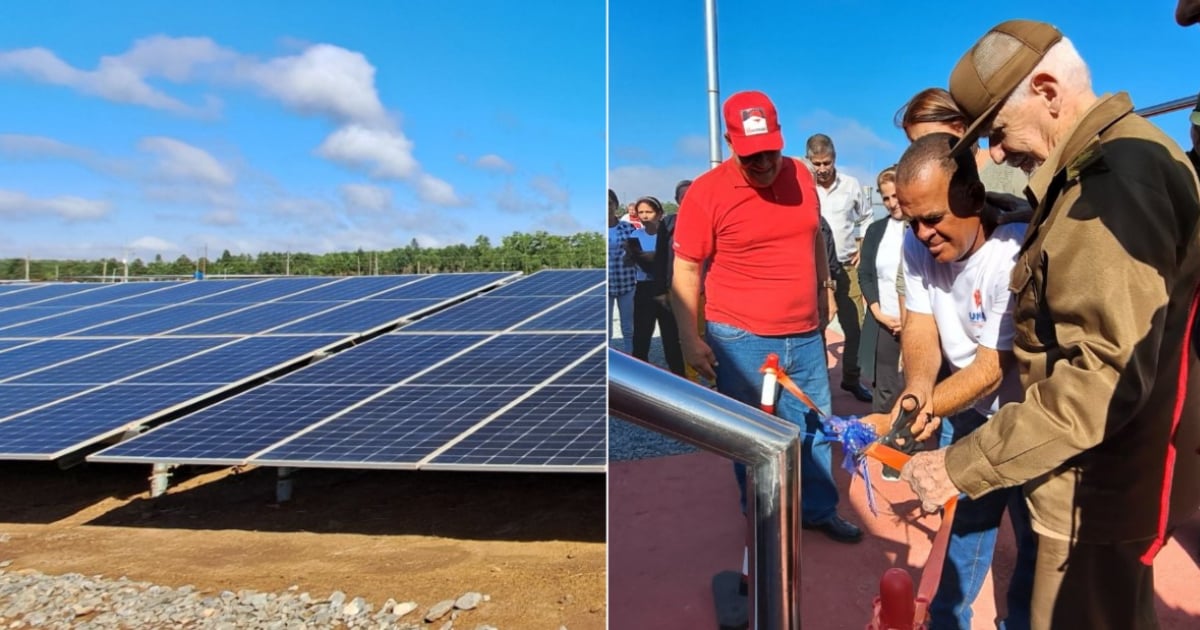The Cuban regime inaugurated the "Alcade Mayor" solar photovoltaic park in the province of Cienfuegos this Saturday, marking a step in its strategy to boost renewable energy sources during a severe energy crisis. Contributing 21 megawatts (MW) to the National Electric System (SEN), this facility has been presented as progress in the government's plan to lessen reliance on fossil fuels.
Commander Ramiro Valdés, a pivotal figure in the country's energy decisions, was present at the inauguration, although the event lacked the presence of the ruler Miguel Díaz-Canel. The Minister of Energy and Mines, Vicente de la O Levy, expressed enthusiasm over the park's operation and reiterated the government's commitment to renewable energy. "This is a macro program, composed of many small efforts," the minister stated on social media. Official data indicates that the park's operation will save 9,000 tons of fossil fuels annually.
An Ambitious Plan Amidst an Ongoing Crisis
The "Alcade Mayor" solar park joins another recently inaugurated facility in Havana, the "Escuela de Enfermería," which includes 42,588 solar panels and a capacity of 21.8 MW. Both are part of an investment plan aimed at establishing 46 solar parks with a total generation capacity of 1,200 MW by the end of 2025.
However, skepticism among the populace remains high due to the regime's history of unfulfilled promises and the continued decline of the country's energy infrastructure. Prior to the solar park's inauguration in Cienfuegos, the SEN reported generation deficits exceeding 1,500 MW, necessitating power rationing in several provinces.
The Antonio Guiteras thermoelectric plant, the largest in the country, is in a critical state with corroded structures and frequent failures that limit its generation capacity. Other plants, such as those in Nuevitas, Mariel, and Felton, are also out of service or undergoing maintenance, exacerbating the SEN's collapse.
China's Role in Cuba's Energy Strategy
The Cuban government's push towards renewable energy has been supported by China. Last November, during the Havana International Fair, Hangzhou Duojia Technology Co. Ltd reaffirmed its commitment to the island's energy transition, declaring solar panels as the "definitive solution" to Cuba's electricity crisis.
According to its president, Qiaoming Huang, the company has provided solar technology for small commercial projects and shipped containers of solar panels and lithium batteries to the island. In April 2024, Cuba and China signed an agreement to expand solar energy use within the Cuban electric grid, though details on financing this mega-project remain undisclosed.
Additionally, in November, the Ministry of Energy and Mines announced an even more ambitious plan: to install 2,000 MW of solar energy by 2028, with the first phase of 1,000 MW set to begin operation in the summer of 2025.
Real Solution or Insufficient Measure?
Despite the government's attempts to highlight these projects as steps towards energy independence, the population continues to suffer from the SEN's collapse. Recently, blackouts have reached alarming levels, with reports of prolonged power outages and energy availability far below demand.
The "Alcade Mayor" solar park is merely a component of the government's plan, but its true impact on the energy crisis remains uncertain. Meanwhile, Cubans persist in facing the uncertainty of a crumbling electrical infrastructure and official promises that have yet to put an end to the blackouts.
Understanding Cuba's Renewable Energy Efforts
What is the capacity of the new solar park in Cienfuegos?
The new solar park in Cienfuegos has a capacity of 21 megawatts (MW).
How many solar parks are planned by the Cuban government by 2025?
The Cuban government plans to establish 46 solar parks with a total generation capacity of 1,200 MW by the end of 2025.
What role does China play in Cuba's renewable energy strategy?
China, through companies like Hangzhou Duojia Technology Co. Ltd, is providing solar technology and support to help Cuba transition to renewable energy.
